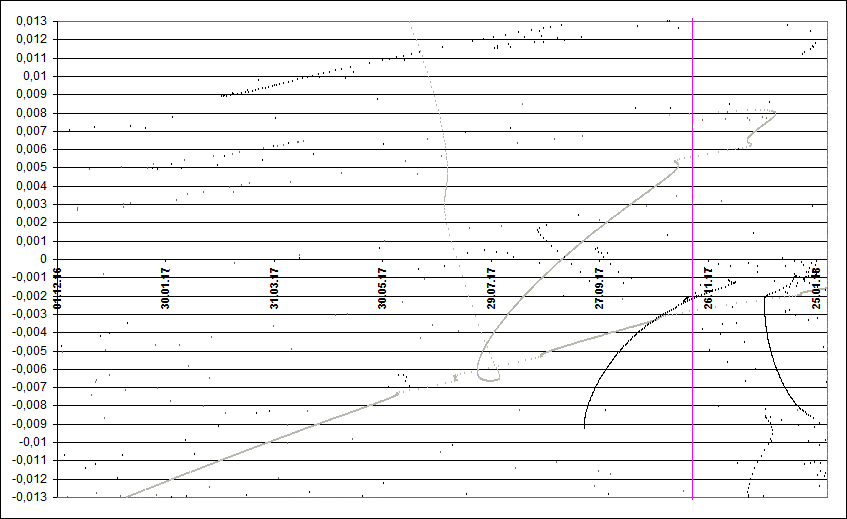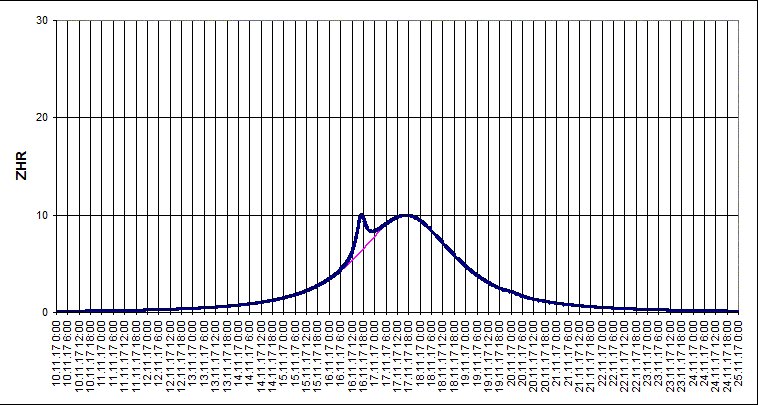Leonids 2017: prediction of activity
to the list of predictions

Fig. 1. Space-temporal projection of Leonids trails parts onto their minimal distance passages in 2017 (correspondence between colours of the particles and their ejection velocities can be seen here).

Fig. 3. Assumed profile of overall Leonid activity (blue line) and its background component (red line).
In 2017 a primary Leonid maximum is expected besides traditional one due to 1300 trail influence. Computed time of this maximum is 17:07 UT on November 16, expected total ZHR (with background activity) is about 10. Also we expect higher share of bright meteors during several hours around this maximum.
The second expected Leonid maximum is traditional one. According to the IMO data, it occurs on the solar longitude 235.27°, in 2017 it corresponds to 16:29 UT 17 November. As observations show, in "usual" years its maximum ZHR is around 10-20.
References
1. "Comet's dust 2.0" program by S. Shanov and S. Dubrovsky. [Used for orbital computations.]
2. Lyytinen E, van Flandern T. "Predicting the strength of Leonid outbursts", 2000, Icarus, P. 158-160.
3. Jenniskens P. Meteor showers and their parent comets, 2006, 780 p. 4. Kasuo Kinoshita, http://jcometobs.web.fc2.com/ [Orbital elements of the comet 55P Tempel-Tuttle]